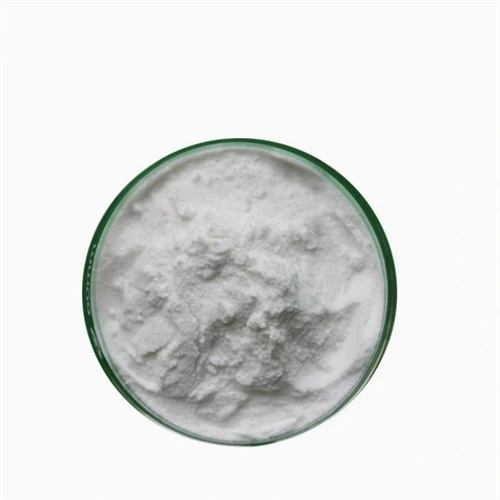Warning: Undefined array key "title" in /home/www/wwwroot/HTML/www.exportstart.com/wp-content/themes/1198/header.php on line 6
Warning: Undefined array key "file" in /home/www/wwwroot/HTML/www.exportstart.com/wp-content/themes/1198/header.php on line 7
Warning: Undefined array key "title" in /home/www/wwwroot/HTML/www.exportstart.com/wp-content/themes/1198/header.php on line 7
Warning: Undefined array key "title" in /home/www/wwwroot/HTML/www.exportstart.com/wp-content/themes/1198/header.php on line 7
- Afrikaans
- Albanian
- Amharic
- Arabic
- Armenian
- Azerbaijani
- Basque
- Belarusian
- Bengali
- Bosnian
- Bulgarian
- Catalan
- Cebuano
- China
- China (Taiwan)
- Corsican
- Croatian
- Czech
- Danish
- Dutch
- English
- Esperanto
- Estonian
- Finnish
- French
- Frisian
- Galician
- Georgian
- German
- Greek
- Gujarati
- Haitian Creole
- hausa
- hawaiian
- Hebrew
- Hindi
- Miao
- Hungarian
- Icelandic
- igbo
- Indonesian
- irish
- Italian
- Japanese
- Javanese
- Kannada
- kazakh
- Khmer
- Rwandese
- Korean
- Kurdish
- Kyrgyz
- Lao
- Latin
- Latvian
- Lithuanian
- Luxembourgish
- Macedonian
- Malgashi
- Malay
- Malayalam
- Maltese
- Maori
- Marathi
- Mongolian
- Myanmar
- Nepali
- Norwegian
- Norwegian
- Occitan
- Pashto
- Persian
- Polish
- Portuguese
- Punjabi
- Romanian
- Russian
- Samoan
- Scottish Gaelic
- Serbian
- Sesotho
- Shona
- Sindhi
- Sinhala
- Slovak
- Slovenian
- Somali
- Spanish
- Sundanese
- Swahili
- Swedish
- Tagalog
- Tajik
- Tamil
- Tatar
- Telugu
- Thai
- Turkish
- Turkmen
- Ukrainian
- Urdu
- Uighur
- Uzbek
- Vietnamese
- Welsh
- Bantu
- Yiddish
- Yoruba
- Zulu
Dec . 09, 2024 22:24 Back to list
Exploring Xanthan Gum Production from Xanthomonas Campestris Bacterial Fermentation
Xanthan Gum from Xanthomonas Campestris A Comprehensive Overview
Xanthan gum is a well-known polysaccharide that has gained immense popularity in various industries, particularly in food, pharmaceuticals, and cosmetics. It is produced by the fermentation of glucose or sucrose by the bacterium Xanthomonas campestris. This unique biopolymer is celebrated for its exceptional thickening and stabilizing properties, making it a vital ingredient in many products.
Origin and Production
The natural source of xanthan gum is the bacterium Xanthomonas campestris, which is commonly found in soil and on plants, particularly cruciferous vegetables like cabbage and broccoli. This bacterium ferments carbohydrates, producing xanthan gum as a byproduct. The production process begins with cultivating the bacteria in a nutrient-rich medium containing a carbon source such as glucose or sucrose. During fermentation, Xanthomonas campestris metabolizes the sugars and secretes xanthan gum into the culture medium.
Following fermentation, the xanthan gum is extracted by precipitating it out of solution using isopropyl alcohol or ethanol. The resulting gum is then purified, dried, and milled to obtain a fine powder that can be easily used as a food additive or in other applications.
Properties and Applications
Xanthan gum is lauded for its unique physical properties. It forms highly viscous solutions at low concentrations and has remarkable stability over a wide range of temperatures and pH levels. Moreover, xanthan gum exhibits pseudoplastic behavior, meaning its viscosity decreases with shear force, making it ideal for products that require easy pouring and spreading.
xanthan gum from xanthomonas campestris

In the food industry, xanthan gum is often used as a thickener, stabilizer, and emulsifier. It can enhance the texture of sauces, dressings, and beverages without altering their flavors. Its ability to improve the mouthfeel and consistency of gluten-free products has made it particularly valuable in the production of gluten-free baked goods, as it helps mimic the texture typically provided by gluten.
Beyond food, xanthan gum finds extensive use in the pharmaceutical industry, where it serves as a stabilizer in liquid formulations and as a binding agent in tablets. In cosmetics, xanthan gum is used to enhance the texture and stability of creams, lotions, and gels, providing a smooth and luxurious feel.
Health Considerations
Xanthan gum is generally recognized as safe (GRAS) by regulatory agencies such as the FDA when consumed in moderate amounts. It is considered a soluble fiber, which means it can have beneficial effects on digestion. However, excessive consumption may lead to gastrointestinal disturbances, especially in individuals sensitive to thickening agents.
Furthermore, xanthan gum is suitable for a variety of dietary needs; it is gluten-free, and vegan, and has low allergenic potential, which makes it an excellent option for individuals with specific food allergies or intolerances.
Conclusion
In conclusion, xanthan gum derived from Xanthomonas campestris has emerged as a multifunctional ingredient that plays a significant role across various industries. Its unique properties allow it to improve the quality and stability of food products, pharmaceutical formulations, and cosmetic items. With the rising demand for gluten-free and clean-label products, xanthan gum continues to gain traction as a preferred thickening and stabilizing agent. As research evolves and more applications are discovered, the significance of xanthan gum in modern formulations is likely to expand even further, solidifying its position as a vital component in diverse sectors.
Latest news
-
Certifications for Vegetarian and Xanthan Gum Vegetarian
NewsJun.17,2025
-
Sustainability Trends Reshaping the SLES N70 Market
NewsJun.17,2025
-
Propylene Glycol Use in Vaccines: Balancing Function and Perception
NewsJun.17,2025
-
Petroleum Jelly in Skincare: Balancing Benefits and Backlash
NewsJun.17,2025
-
Energy Price Volatility and Ripple Effect on Caprolactam Markets
NewsJun.17,2025
-
Spectroscopic Techniques for Adipic Acid Molecular Weight
NewsJun.17,2025

